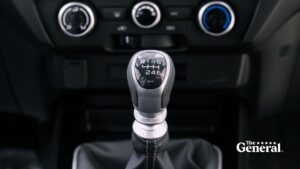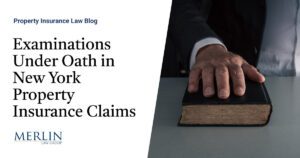Ford Opening Michigan Plant to Make Batteries That Could Bring EV Costs Down

Ford has announced it will open a plant in Marshall, Michigan, specifically to produce lithium-iron-phosphate (LFP) batteries for future electric vehicles.Offering this second battery chemistry in addition to nickel cobalt manganese (NCM) batteries will allow the automaker to boost EV production and lower costs.
Ford will partner with China’s CATL to offer the lithium-iron-phosphate cells—first buying them, then starting in 2026 building them in Michigan—in the Mach-E and F-150 Lightning, then other EVs
Ford announced this afternoon that it will offer a second type of battery chemistry, known as lithium-iron-phosphate or LFP, in two electric vehicles now on sale. The LFP battery packs will become standard on the Select base trim of Mustang Mach-E electric crossover this year, and the base XLT version of the F-150 Lightning full-size pickup truck next year, as Ford announced last July.
The company has now announced it will build a dedicated battery plant in Marshall, Michigan, to produce LFP cells starting in 2026, at a cost of $3.5 billion. That plant will use technology licensed from the world’s highest-volume cell maker, Contemporary Amperex Technology Limited (CATL) in China. Until that plant comes online, Ford will buy cells directly from CATL to use in the base models of those two EVs and others.
Ford
New Battery, Same Range
Using a second battery type lets the company boost production of EVs more quickly, and it will also lower the cost of batteries to make EVs more affordable to more buyers, said Lisa Drake, vice president of EV industrialization for Ford Model E, its EV unit. The company expects to be building EVs at a rate of 600,000 a year by the end of this year, and two million a year by the end of 2026.
Consumers won’t immediately see much difference in the base Mach-E and F-150 Lightning models with the new battery. Both models will retain the same EPA-rated range, according to Marin Gjaja, chief customer officer for Ford Model E. For the Mach-E Select, that’s 224 miles combined; for the F-150 Lightning XLT with rear-wheel drive, it’s 230 miles. Other versions of both models will stick with their current nickel-cobalt-manganese cells, provided by Korean firm SK Innovation.
LFP cells have at least one advantage: they take readily to full recharging from 0 to 100 percent, letting drivers use the entire range of those batteries and then fast-charge them fully with confidence. Ford’s anonymized user data suggests the average Mach-E covers 32 miles a day, with an average trip length of 5 miles—although U.S. buyers frequently ignore average use and buy for their most extreme use case.

Car and Driver
More challenging is the lower performance of LFP cells in cold weather. Ford notes 89 percent of F-150 Lightning trips and 95 percent of Mach-E trips started in ambient temperatures above freezing. This suggests that the LFP cells in the base models of each EV may be better suited to Sun Belt buyers than those in states that get snowfall—perhaps including its home state of Michigan.
Big Cash on the Horizon
It’s too early to say anything about the new batteries’ effect on base EV prices, said Gjaja, but their use of commonly available substances—iron and phosphate—insulates the cells from the rising costs of cobalt, nickel, and manganese metals used in EV batteries to date.
“Adding large-scale LFP to the mix will be important for Ford and other OEMs because the critical minerals are so much more readily available compared to nickel-rich chemistries,” explained Sam Abuelsamid, principal e-mobility analyst at Guidehouse Insights. “Expanding production of nickel and cobalt for the sort of vehicle production these companies are targeting just isn’t realistic by 2030.”
Even more important, though, a provision of the federal Inflation Reduction Act signed last year funds 10 years of production credits for manufacturing battery cells in the U.S. from materials sourced from a limited list of countries. Called Section 45X, its subsidies of up to $45 per kilowatt-hour are expected to make U.S.-built EV batteries so cheap that large swaths of Western cell and battery manufacturing will rush to locate in North America.
Asked if she expected the planned LFP plant in Michigan to qualify fully for those incentives, Ford’s Drake answered in one word: “Absolutely!”
The China Issue
Licensing battery technology from a Chinese company carries notable political risk. That’s especially true at the moment: Last month, Virginia governor Glenn Youngkin ended his state’s effort to land the Ford cell plant now slated for Michigan. His administration had previously characterized the plant as a “front” for the Chinese Communist Party.
But tight supplies of other battery metals and its goal of 2 million EVs a year by 2026 seemingly left Ford no other option. In the words of old China hand Michael Dunne, CEO of the consulting firm ZoZo Go: “Ford has declared it’s going to the LFP dance, and it needs a date. The only dates available come from China: either CATL or BYD.
“It’s a reality check on where Ford and the nascent U.S. electric-vehicle industry is today,” Dunne added. “They can’t get LFP technology without China.”
A Ford subsidiary will build and operate the Marshall battery plant and license the CATL technology, with a planned annual production of 35 gigawatt-hours at full capacity, or enough for 400,000 EVs a year. That suggests that the plant might supply 20 percent of Ford’s 2026 EV production, though continued purchases of LFP cells could raise that percentage higher.
Establishing a separate company to build batteries echoes previous arrangements between General Motors and Korean cell maker LG Energy Solutions for two cell plants announced in prior years. Prototype cells are now emerging from the first, in Warren, Michigan; production should start at the second, in Spring Hill, Tennessee, by the end of the year.
Ford Follows Tesla
But Ford remains the sole U.S. automaker to have announced it will fit LFP cells to its EVs and build a U.S. plant to provide them. The Tesla Model 3 Standard Range sedan, its base trim, has used LFP cells since last year, but those battery cells are imported (as Ford’s will be initially). Tesla has no announced plans to set up U.S. production of LFP cells.
Other carmakers, including Volvo, Stellantis and VW Group, have announced their intention to use LFP in addition to nickel chemistries, Abuelsamid pointed out, but none of them have announced product launches or plans to build those cells in the U.S.
The only other U.S. LFP plant to date is a smaller 20.0-GWh cell factory announced by Our Next Energy, a Michigan battery startup. Chinese cell maker Gotion plans to produce battery materials at a Michigan factory, but its anticipated announcement of a deal with a major automaker hasn’t yet appeared.
This content is imported from poll. You may be able to find the same content in another format, or you may be able to find more information, at their web site.





